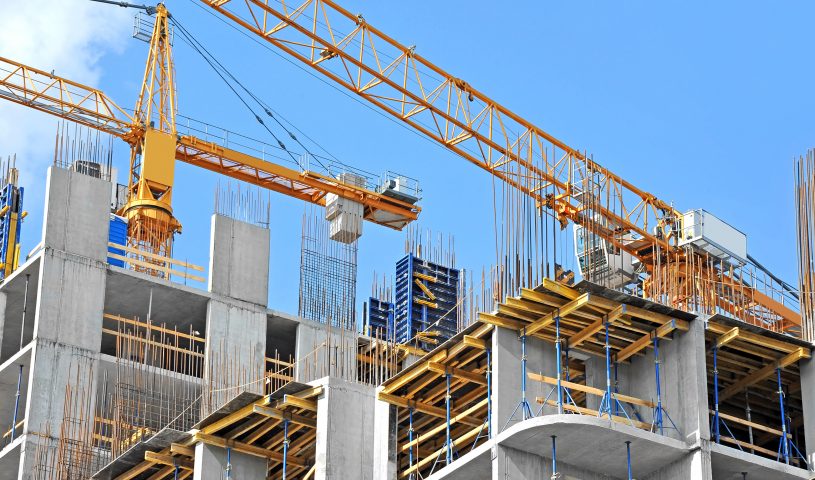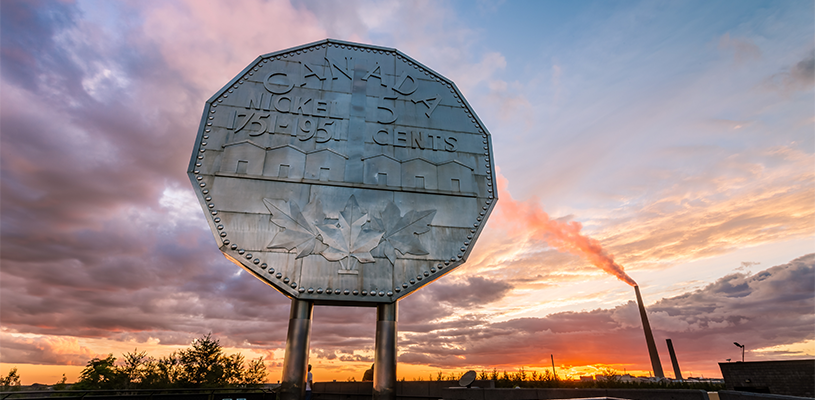Langford BC: New policy aims to reduce construction industry emissions

Low-carbon policy introduces standards for concrete used in construction
The City of Langford, just west of Victoria on Vancouver Island, is hoping to lead the way toward more sustainable building practices with a new low-carbon concrete policy. Come June 2022, Langford will require all concrete used in the city to meet new low-carbon requirements. The announcement makes the city the first jurisdiction in Canada to adopt a low-carbon concrete policy.
In Canada, concrete is one the most widely used construction materials, with an annual production rate of 60 million tonnes. Meanwhile, cement – one of the main components in concrete – has a production rate of 14 million tonnes.
When it was incorporated in 1992, the City of Langford had a population of around 12,000 people. Today, that number is around 50,000; and as more people and businesses move in, a wave of new construction is underway. That includes high-rise buildings going up around the city’s downtown core. But those new buildings also come with a larger carbon footprint.
“With this policy, Langford is … setting a new, higher standard for policymakers across Canada to rein in emissions and protect our communities from the worst impacts of climate change,” said Langford Mayor Stewart Young. “On June 1, all concrete used in Langford, whether it’s for a city or a private project, has to have CO2 reduction technologies in place.”
The Shift to Greener Concrete
The construction industry is a big contributor to global greenhouse gas emissions. Almost 40 percent of emissions come from construction, with cement production accounting for around seven percent of global greenhouse gas emissions.
Around the world, governments are the largest consumers of concrete, using roughly 40 percent of all concrete produced every year. Getting all orders of governments to make the shift to greener concrete can make a big contribution to reducing emissions.
Langford’s new policy requires that project teams submit a product-specific Environmental Product Declaration (EPD) that is third-party verified. These would work kind of like nutritional labels on food packaging. The declarations allow city officials to track the environmental impacts of purchased concrete materials and take steps to reduce greenhouse gas emissions from local construction.
“Concrete is one of the largest contributors to CO2 emissions in the world … As we build our downtown core, we’re doing it in the best possible way for reducing the effects of climate change,” said Mayor Young.
What is Low-Carbon Concrete?
Low-carbon technologies have been around for a while, but it’s only been more recently that the industry started paying serious attention.
Halifax-based CarbonCure Technologies works with concrete manufacturers to produce low-carbon concrete that reduces greenhouse gas emissions from construction projects. The company is doing that in part by finding ways to turn CO2 from a pollutant by-product into something the construction industry can use to manufacture greener products.
“There is this huge opportunity for responsible, sustainable development,” said Eric Dunford, Senior Director of Government Affairs at CarbonCure.
CarbonCure’s technology works by injecting CO2 into concrete mix, which then becomes a mineral (Calcium Carbonate) locked into the concrete. That process means that manufacturers can reduce the amount of cement they use while still maintaining the quality and strength of their concrete.
While the private sector has been quick to embrace the new technology, the public sector has had a slower response. That can pose a big challenge for concrete producers.
“The government is often the single largest consumer of concrete in the market, so if they’re not actively adopting change like Langford is doing, then the private sector has difficulty taking steps forward,” said Dunford.
But governments are slowly catching up as they race to meet emissions targets.
Greening Government Strategy
Earlier this year, the federal government and the Cement Association of Canada announced a partnership to lead low-carbon concrete production. The government also pledged a 30 percent carbon reduction in its construction projects. That includes reducing carbon emissions from the concrete used in government construction projects.
The announcement is part of the government’s Greening Government Strategy to transition to net-zero carbon emissions by 2050.
“Green procurement for building materials like cement will help us lower emissions and meet our federal goal of net-zero by 2050,” said Minister of Health Jean-Yves Duclos.
Low-carbon concrete policies are also becoming more common south of the border. In January 2020, Marin County, CA passed the Bay Area low-carbon concrete codes. The regulations – the first in North America – set maximum limits for the usage of cement in concrete based on carbon emissions. Hawaii legislators tabled legislation that would require all state building construction to use low-carbon concrete. State governments in California and New Jersey are also considering policies requiring concrete producers to disclose the carbon content of the concrete they use.
The company is also working with producers in BC to reclaim concrete from wastewater. Managing wastewater from the production process can be costly and damaging to the environment. By injecting CO2 into the wastewater, manufacturers can reclaim cement material that would otherwise have to be discarded. That in turn reduces the amount of fresh water and cement that manufacturers need to produce their concrete.
“The carbon removal results are considerable,” said Travis Janke, Senior Director of Product Development at CarbonCure. “The technology adds incredible value to a concrete producer’s operations as they can recover full value from their waste cement and water.”
Back in Langford, Mayor Young hopes that the new policy will help the city meet its decarbonization targets and contribute to tackling climate change.
“We’re seeing the effects of the climate crisis across our province now … Doing this was a no-brainer for us,” said Mayor Young. MW
✯ Municipal World Insider and Executive Members: You might also be interested in Tonja Leach’s article: Blazing the path to net-zero.
Ibrahim Daair is a Staff Writer and Copy Editor at Municipal World.
Related resource materials:


